When Should You First Bathe a Newborn?
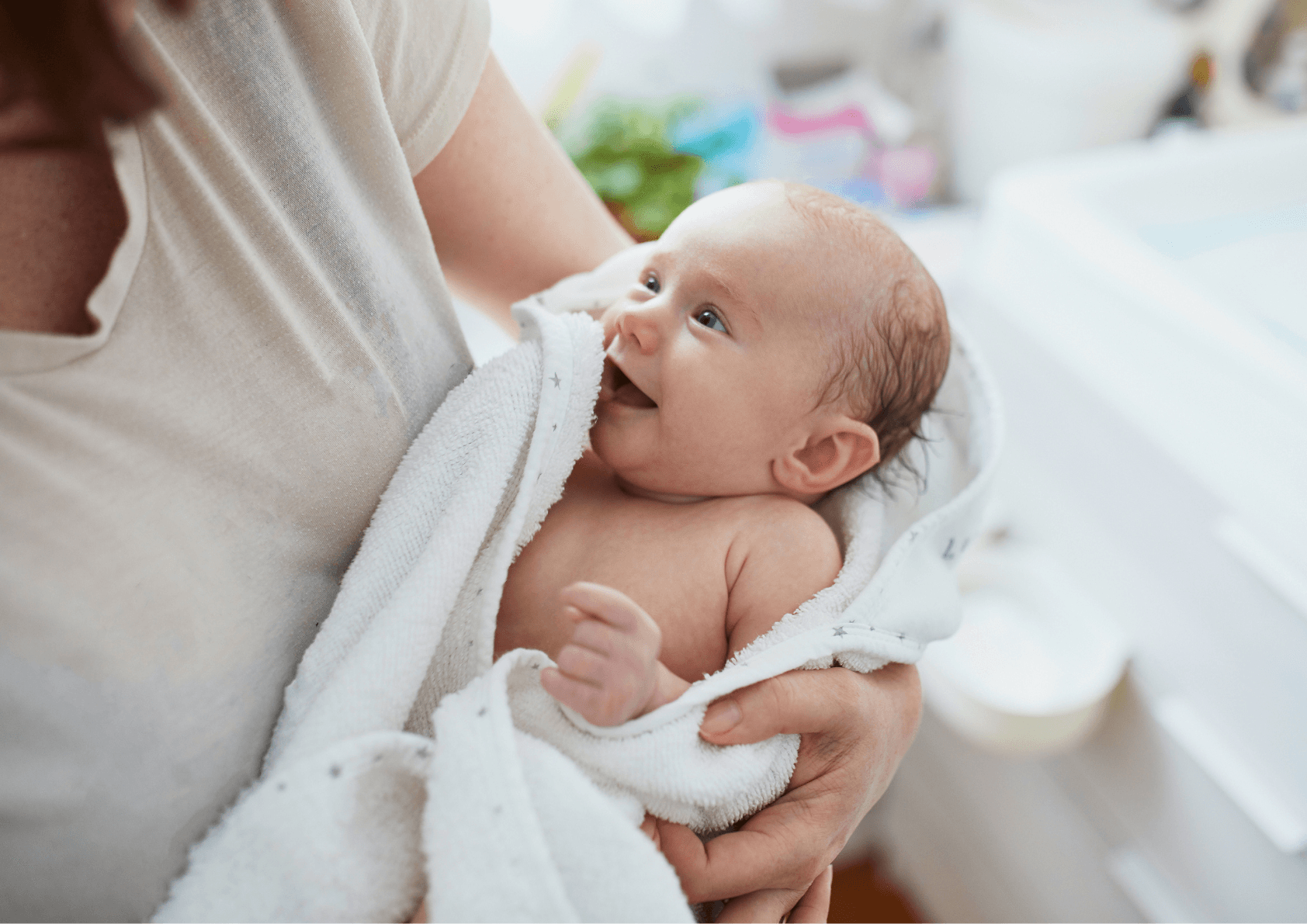
The definitive guide to bathing your baby, written by a mum who's just been giving her newborn a bath last night. When should you first bathe a newborn? How should you first wash a newborn? How often should I give my baby a bath? The answers to these baby bathing questions and more are covered.
And it is worth getting your baby's bath time right. Studies show it can have a positive and profound influence your child's behaviour and physiology, increased breastfeeding success due to enhanced skin-to-skin contact, better temperature regulation and softer skin after birth plus other benefits we'll get into!
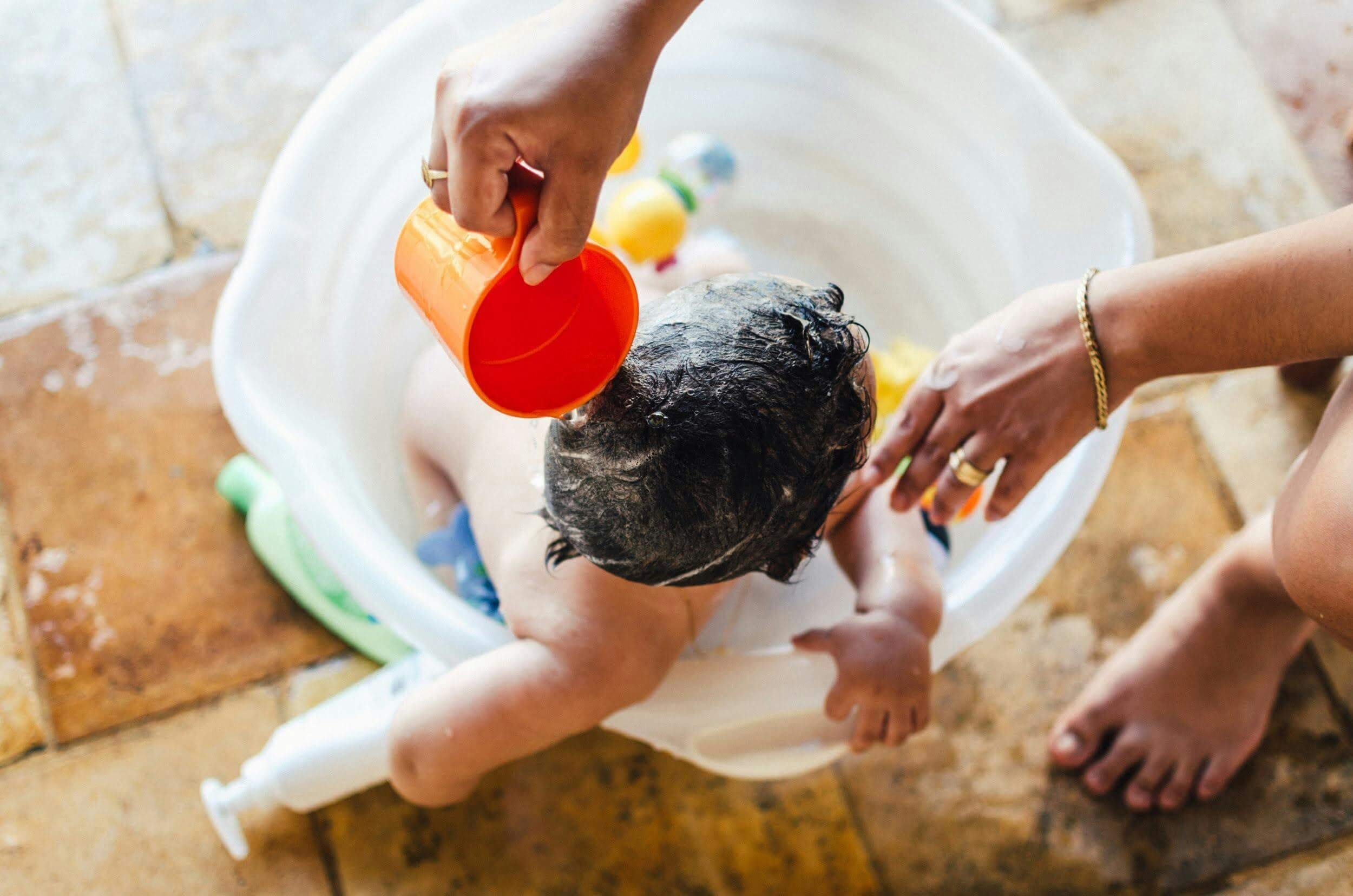
When Should You First Bathe a Newborn
Hospitals once bathed your newborn shortly after birth, although there's now consensus you should be delaying their first bath.
The World Health Organization (WHO) advises delaying baby's first bath for at least 24 hours after birth, and at minimum 6 hours. Similarly, the Association of Women's Health, Obstetric and Neonatal Nurses (AWHONN) ran a "Wait for Eight" programme, advocating for delaying sponge baths for 8 hours. The advice on your baby's first bath does still vary between hospitals, but broad consensus is to delay.
There's some exceptions that call for bathing your newborn baby sooner if your baby's skin was exposed to certain infections like HIV or hepatitis, so you seek professional medical counsel if you're unsure about delaying.
Personally, in my own home we waited for over a week before giving our newborn sponge baths.
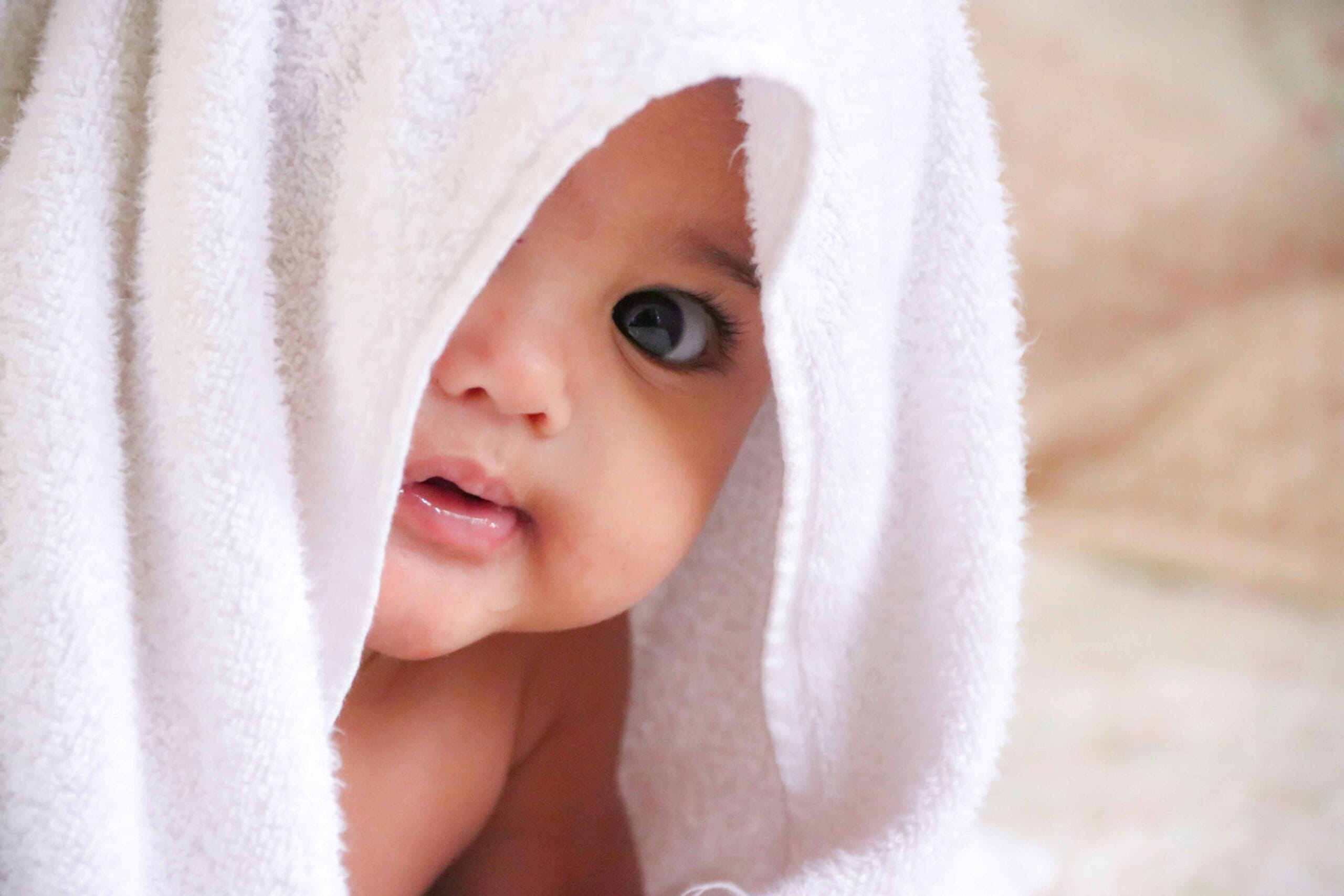
Why Delay Your Baby's First Bath?
The main reasons for delaying your newborn's first bath are:
| Improving Bonding and Breastfeeding | Immediate skin-to-skin contact (SSC) between mother and child is shown to help regulate your baby's temperature and heart rate, reduce stress, and even increase the success of breastfeeding long-term. |
| Preserving Their Natural Coating | At birth, most babies are covered in a white coating called vernix caseosa. Vernix helps moisturise and protect them from dry skin and infection as they adjust to air on their skin for the first time. |
| Keeping Them Warm | Newborns can lose heat rapidly, so exposure to bath water before their body has learned to stabilise their temperature risks a sudden drop in their body heat that a potentially cause hypothermia. |
| Keeping Their Blood Sugar Stable | Because first baths can be stressful for newborns, they can trigger the release of hormones that can drop their blood sugar levels, leading to hypoglycemia. This can cause lethargy, make breastfeeding more difficult, and in severe cases, could trigger neurological issues |
How Often to Bathe Your Newborn
Pediatric and dermatological experts broadly agree you shouldn't be bathing your baby every day. Typically 2-3 times a week is sufficient. More often and you can damage your baby's skin by drying it out and stripping away their naturally protective baby oils, lipids. Besides, many newborns don't get very dirty beyond their diapers. Often a quick wipe is enough to keep them clean.
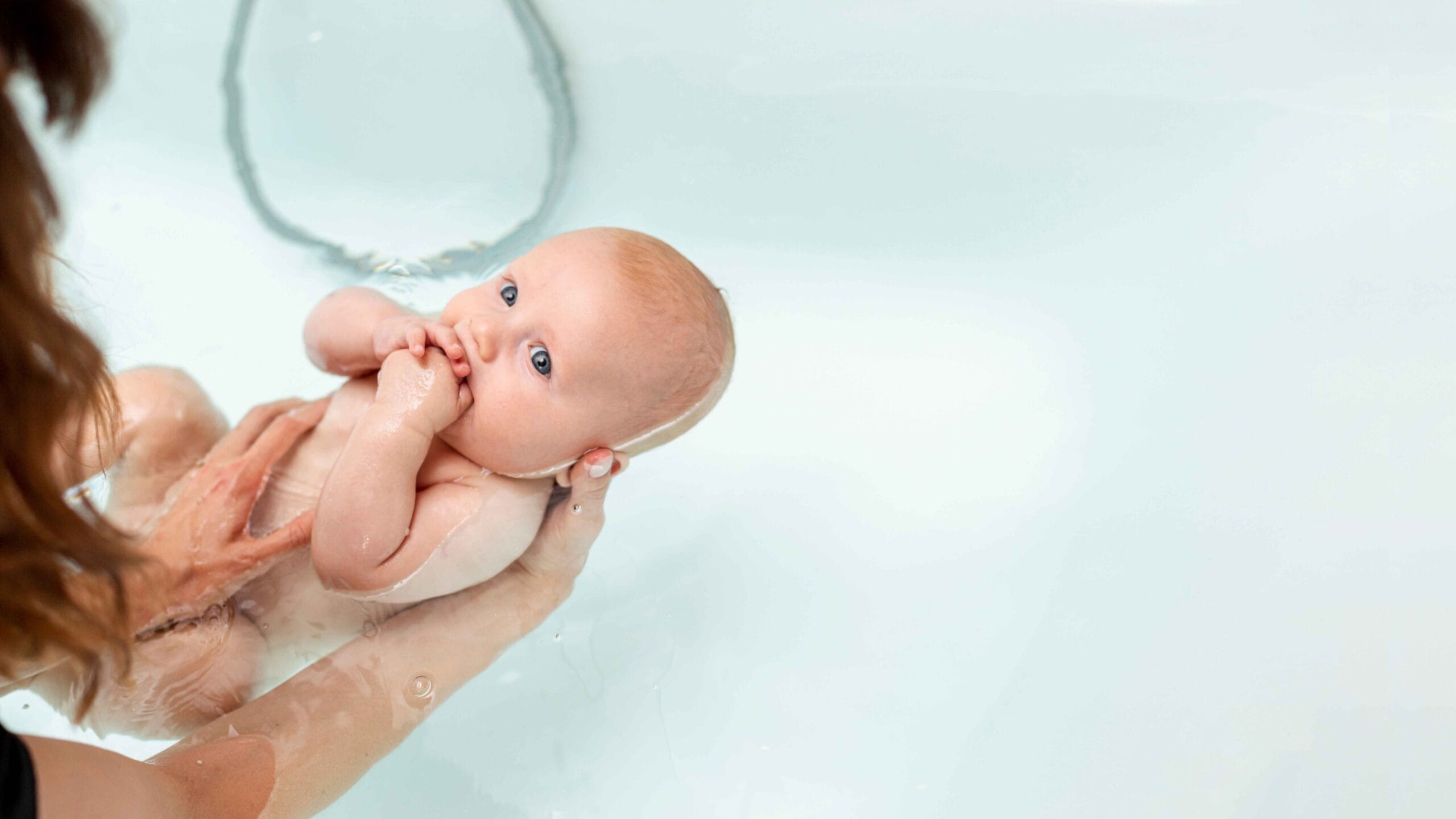
When To Give Your Baby a Bath More Often
Newborns with Atopic Dermatitis (eczema) may actually need daily short (5-10 minutes) lukewarm baths to hydrate their skin, remove crusts and irritants, and prepare their skin for medical moisturisers called emollients. Talk to a healthcare professional about what's best for your child as this is an evolving area of research.
More generally, you may bathe your baby more frequently if they happen to be particularly messy. My daughter used to get reflux regularly, and sometimes additional baths were needed to keep her clean.
Some parents do choose to bathe their babies more often, which can be safe as long as their skin doesn't become too dry. But newborns do shed about three layers of skin within their first week, so daily baths from brith should be avoided unless advised by a medical professional.
When To Give Your Baby a Bath Less Often
On the other hand, with preterm infants it's been encouraged to bathe your baby even less frequently due to their fragile skin.
Bathing Your Baby: Step-by-Step
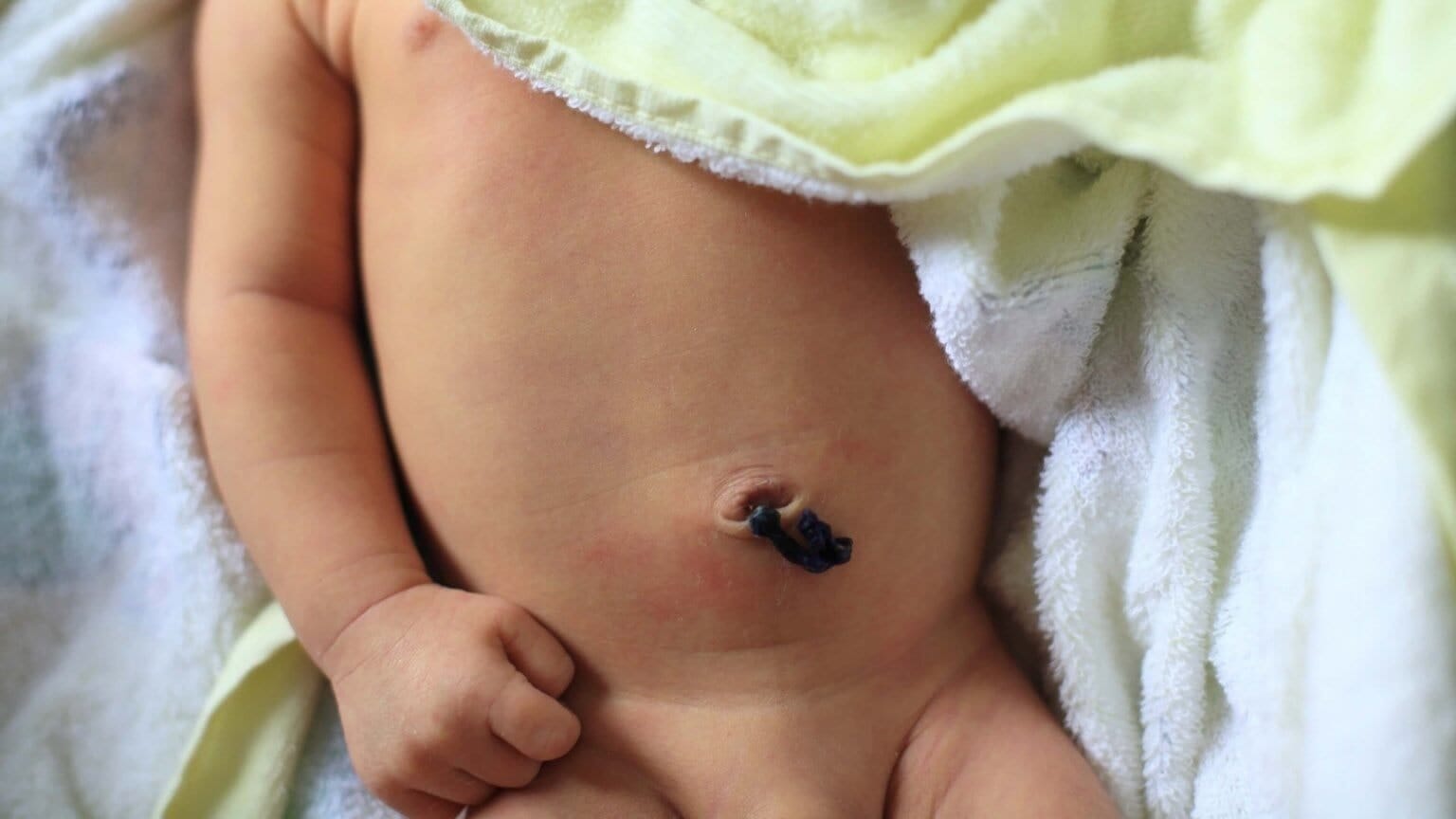
How you bathe your child changes their first year of life. Initially, parents should use 'non-immersive' techniques that are particularly helpful for:
Letting the child's umbilical cord heal, which typically takes about two or more weeks during which time it shouldn't be soaked to avoid infection.
Letting their circumcision heal (for circumcised boys), similarly to avoid infection.
Getting them used to plain water
Keeping them clean of course!
Below, we'll cover the main non-immersive and immersive techniques.
1. Sponge Baths
For a newborn's sponge bath you must:
Prep Your Supplies, Room & Baby: Prepare a bowl of warm water, a couple clean cloths, a dry towel (my daughter enjoys a hooded one), a clean diaper and clean clothes. Choose a draft-free, warm room with a safe flat surface to place your child on (I often just use my daughter's diaper area). Undress them down to their diaper (or fully) and wrap them in a towel for warmth.
Wash Their Head & Face: Dip a washcloth in the water, wringing out any excess. Gently wipe your baby's face, starting with your baby's eyes and then your baby's ears. Then gently wipe your baby's scalp down to the base of your baby's head.
Wash Their Body & Lower Half: Wash the rest of their body, working down from the neck. Clean any creases in their neck, under their upper arms, between fingers and toes, and in the groin area. Don't press too hard when cleaning their skin folds. Try to gently loosen crease crumbs with some gentle wipes instead.
Dry & Dress Your Baby: Gently pat them with a towel until they have completely dry skin, including any skin folds. Don't rub them with the towel as baby's skin is quite sensitive. If your baby's umbilical cord got wet during the bath, make sure dry it thoroughly.
Notice I didn't mention baby soap. You can use a couple drops of mild soap when bathing your baby if you'd like (particularly on their lower body), but even mild shampoo isn't strictly necessary when bathing your baby.

2. Top & Tailing
Between sponge baths, the NHS recommend 'topping & tailing' in which you:
Clean the 'Top': Dip cotton wool balls in warm plain water and wipe gently: their eyes (inward to outward), their ears (around the outside), your baby's neck (in-between any creases) and your baby's hands. Make sure to use a fresh piece of cotton wool for each eye and ear to minimise the risk of infection.
Clean the 'Tail': Remove their nappy, wipe their bottom and genitals thoroughly with a few clean cotton wool pads.
I often 'top & tail' my daughter whenever changing her nappy. By our changing mats we keep a bunch of cotton buds, wool pads that are always in arms reach when changing her.
3. Bath Tub: Full Bath Time
Once your child is ready for a full bath you can start using the tub:
Prep Your Room, Supplies & Baby: This is all similar to a sponge bath prep, except before a tub bath, for your child's safety you must have all necessary supplies ready within arm's reach. This includes towels, soft washcloths, mild soap, cups or clean nappies you may need. When you're ready, fill up the tub with about 3-5 inches of warm water.
Wash Their Head & Face: Use a soft cloth dipped in warm water to clean their eyes, ears and scalp. At first this is better to do before they're in the tub as it's less stressful for them.
Hold & Lower Them Into the Tub: Undress them (if you haven't already) including their nappy. Cradle your baby's head & neck, with one arm, and support their lower half with your other forearm. Gently lower them feet first into the water.
Wash Them in the Tub: You should continue supporting their head and body with your arms even after they've settled. When they're settled, remove a hand and with that free hand clean them with a warm washcloth. You can place a warm wet washcloth across their belly for added warmth too. If your have another family member helping while you're bathing your baby, they can pour cups of warm water on your baby's belly and the damp washcloth you've placed on them for more warmth.
Gently Lift Them Out: After around 5 to 10 minutes of bathing your baby, in the same way you lowered them down, slowly lift your baby straight up and out.
Dry & Dress Them: Quickly wrap them in a towel, get your baby dry, get them warm, in a fresh nappy, clean clothes, and you're done!
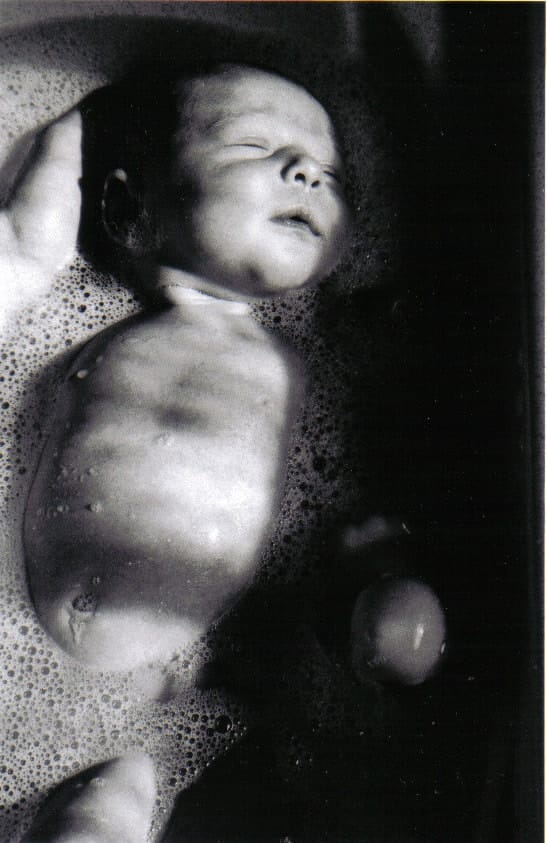
Bath Time Safety
When you bathe your newborn, adult supervision is always required. Never leave them alone in the bath; even for a moment, as it can lead to drowning. If you have to go get something, always take them with you.
And take extra care around any hard surfaces or corners around the bath! Use towels to cover and soften surfaces if needed.
What Bath Temperature Does Your Baby Need?
According to the NHS, the ideal baby bath water temperature is 37-38°C. This will closely match your baby's body temperature. It should feel comfortably warm, never hot.
Test the water temperature before bathing your baby and use a thermometer if you're unsure. Often it's safer to add cold water first and then heat up the water with hot water. Their skin can be damaged easily by hot water, so always be on the safe side. The goal to keep your baby warm during bath time, not to get them hot.
Baby Bathtubs & Bath Seats
To make bath time easier many parents choose to use:
Plastic Tubs: These are small baby bath tubs that are sloped and textured to avoid sliding, and with smooth edges to avoid injury.
Clean Washing-Up Bowl: When your newborn baby is at their tiniest, sometimes a big washing up bowl can work.
Sink or Basin: A working sink can be used, although if it has protruding faucets and hard surfaces it can be dangerous. Sinks are also filled with germs if they're used regularly. So a deep clean and padding hard surfaces is recommended.
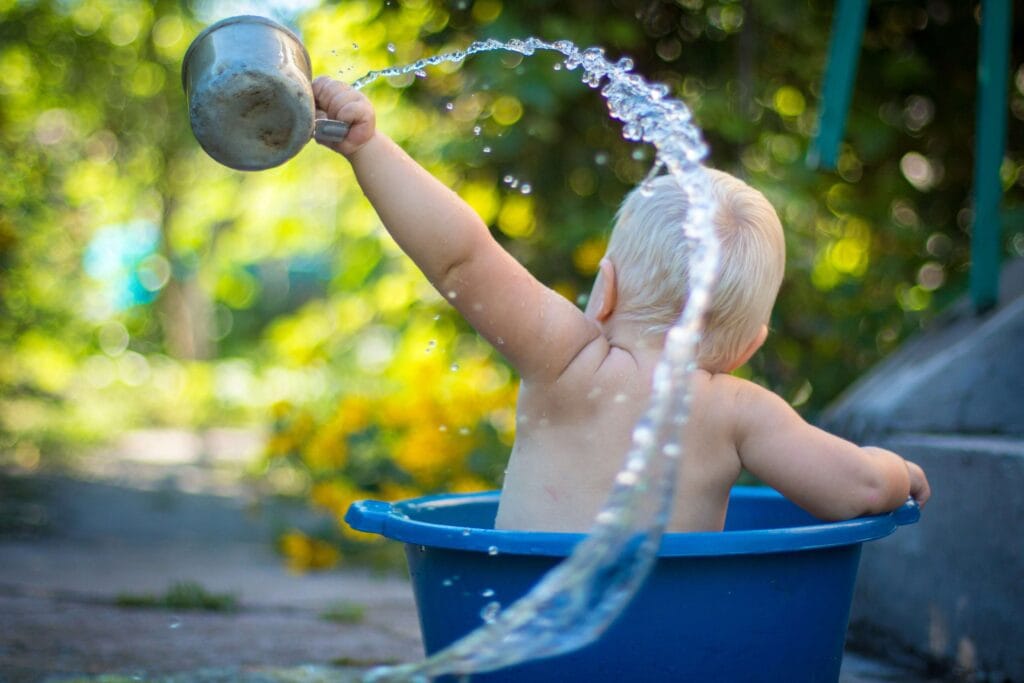
Personally, I always found holding my newborn baby in the tub with my own hands was best as I could always adjust my hands immediately if she got uncomfortable. We did use a small plastic tub too, but it took us buying a couple to find one that was comfortable for her to lay back on.
Cleaning your Baby's Nails
Consider clipping their nails after their bath too. Their nails will be softer after a bath, so you'll have an easier time clipping them. Typically you don't need to cut their nails that often though.
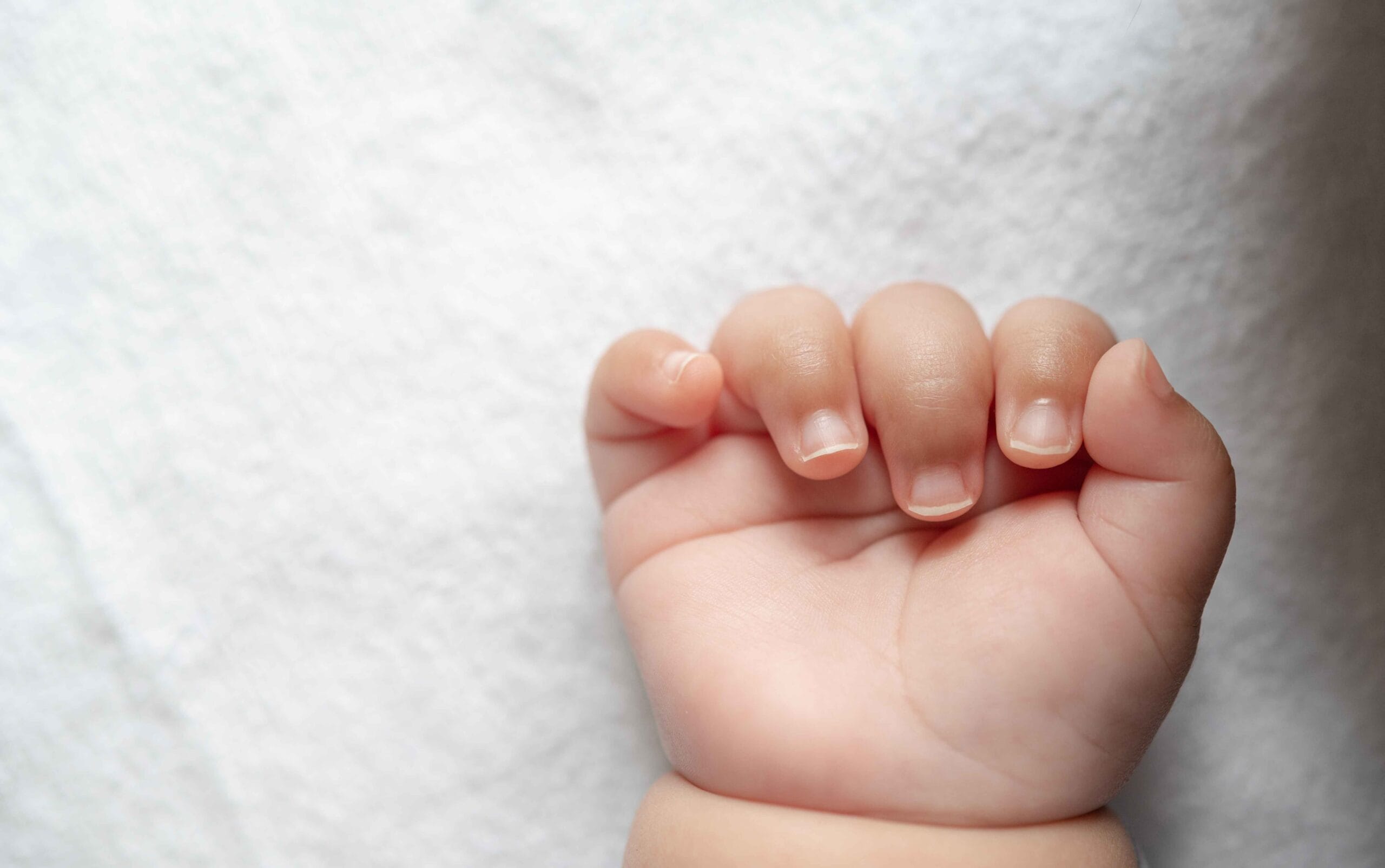
Additional Baby Bathing Tips
Wrapping up, some additional tips to remember for baths are:
Choose the best time of day for bathing your baby. Making bath time part of a routine can help babies become more accustomed to them. I use bath time as part of a bedtime routine for my daughter, for example.
Avoid bathing them right after feeding. It's best to let their food settle first. Otherwise they can get an upset tummy during the bath.
Talk or sing to your newborn baby during bath time. I've found this helps them to relax.
If you're using baby shampoo, use a neutral-pH, and additive-free baby soap.
Consider adding some post-bath baby massage after they're one month old. There's many benefits to massage for children, and as part of a bedtime routine, it can help them relax before sleeping.
If your child has a lot of hair and you want to brush it after bathing your baby, make sure it's a very soft brush as their skin is delicate.
Using a light moisturiser on your newborn can be protective for their skin. I keep a lotion in our diaper area to use before bed every few nights.
Enjoy Bath Time
Giving my daughter baths can be hard to start sometimes, especially at the end of a long day, but it's truly a joy to see her smile in the water. So savour those moments, while you're trying to figure this bath stuff out. I hope this has been helpful for some parents out there. Good luck!

